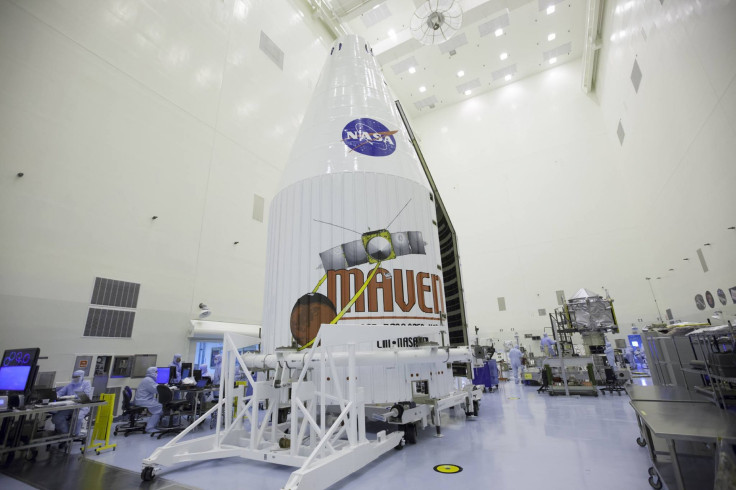NASA MAVEN Live Stream: Watch The Mars Mission Launch Here [VIDEO]

NASA’s Maven spacecraft will launch on Nov. 18 from Cape Canaveral, and the space agency is providing a live stream, with coverage beginning at 11 a.m. EST. Maven will explore Mars’ upper atmosphere and attempt to answer some questions that have stumped researchers.
NASA has begun the countdown to launch from Florida. The Maven, or Mars Atmosphere and Volatile EvolutioN mission, is sitting atop the Atlas V rocket waiting to launch from Space Launch Complex 41 at Cape Canaveral Air Force Station. The launch is scheduled for 1:28 p.m. EST, with NASA establishing a two-hour launch window. The weather is looking good ahead of launch, with the forecast calling for a 60 percent chance of favorable weather during the launch window, notes NASA.
The Maven will explore a previously ignored part of Mars. Previous Mars missions have included orbiters, landers and rovers looking for water or signs of life in Mars’ history with the focus on the surface of the red planet. Maven will explore the upper atmosphere and the region of ionized gas just above the surface of Mars known as the ionosphere.
Mars wasn't the barren planet we all now know, with plenty of water and a thick atmosphere that warmed the planet. Over the course of history, Mars lost that insulating atmosphere and Maven hopes to uncover what happened and the reason for the dramatic climate change. According to one theory, Mars’ climate change was due to the sun and solar wind causing gas from the upper atmosphere to escape.
Maven will have three instrument suites to study the upper atmosphere, including the composition of gases, and determine the role of solar wind in the disappearance of Mars' atmosphere. According to NASA, Maven will be able to sample the upper atmosphere during each orbit.
The spacecraft will explore Mars from varying heights, going as high as 3,728 miles, or 6,000 kilometers, above the planet’s surface to snap an ultraviolet image of the entire planet, and as low as 93 miles, or 150 kilometers. Maven will also take part in five “deep-dip” missions, dropping to an altitude of just 77 miles, or 125 kilometers, above the surface of Mars. The spacecraft will sample the lower atmosphere of Mars during these missions.
The Maven launch live stream, courtesy of NASA, can be viewed below.
Live streaming video by Ustream© Copyright IBTimes 2025. All rights reserved.






















